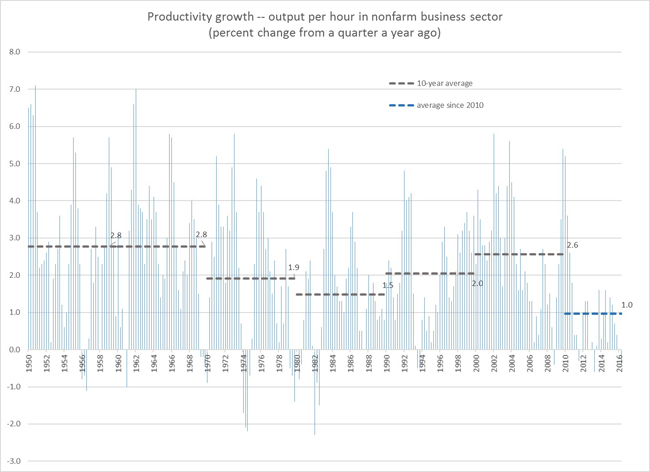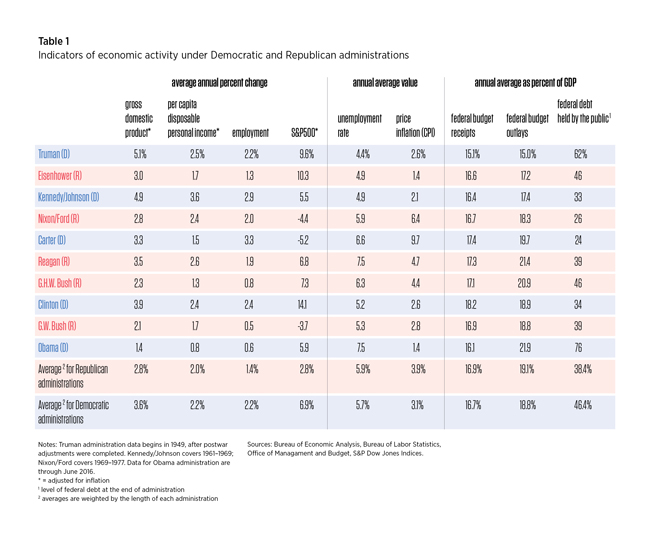Elections, Presidents, and the Economy
The election season will soon be heading into the final stretch. The state of the economy and economic policies, actual or proposed, are almost always major topics of discussion and debate. This election cycle is no exception. Donald Trump gave his major economic speech last Monday. Hillary Clinton has criticized his proposed policies.
But how much can a president really affect the country’s economic performance? The forces that affect the economy act over long periods of time, and in many cases there is not much that a president can do, no matter his or her economic agenda.
Robert Gordon, a prominent economist whose research focuses on issues of economic growth, suggests as much. In a recent op-ed he argues that the slower growth and wage stagnation that make so many voters worried about their economic prospects are “trends that are decades in the making,” and they may not be easily changed by presidential policies.
For example, in the past four years, GDP has averaged only 2 percent per year, much below the over-3-percent growth seen for decades prior to 2007. But that is constrained by deep economic undercurrents. The labor force is not expanding as quickly as it did in decades past because, among other things, female labor force participation has likely reached its peak, and has levelled off. The aging of the population and the anticipated retirement of the Baby Boomers is slowing labor force growth as well. It is unlikely that any president or any policy can alter these trends.
With the labor force growing slowly, the only way to increase output is to somehow generate faster productivity growth. Productivity growth is also crucial for wages, because wages can grow only if output per hour is rising. But here, too, the U.S. economy is facing difficulties. The latest productivity numbers show that productivity (output per hour in the nonfarm business sector) declined in the second quarter of 2016. In recent years, productivity has grown slowly, averaging just one percent annual growth since 2010. This contrasts with much faster productivity growth in earlier decades (see chart).
In his op-ed, Gordon discusses several reasons for the slowdown in productivity. He is known in the economic profession for putting forward a view that most of the “low hanging fruit” of productivity enhancing inventions have already been picked. Gordon says we are in for a long period of much slower productivity growth. If this is the case, policies, or presidents, have limited ability to affect such trends.
Nevertheless, presidents will forever continue to claim credit for the economic successes that happen during their tenure, and their opponents will point out economic calamities that occur on their watch. And the presidential candidates will always claim that they have the recipe for improving the economy. This happens because the voters would like to hear it, not because it is, or can be, supported by data.
Here is a look at the economic performance under past presidential administrations.
Many comparisons can be made, but overall it is difficult to argue that one party systematically performs better than the other as far as the economy is concerned.
Click here to sign up for the Daily Economy weekly digest!










